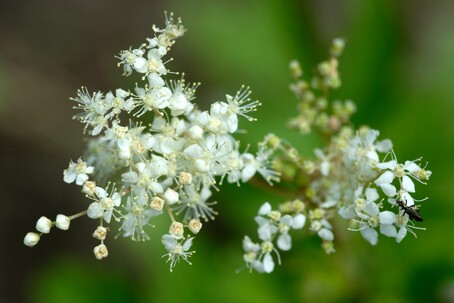By Claire Laurant, Ethnobotanist, France.
About 350,000 different species of plants have been recorded across the planet. Most of our chemical medicines copy molecules of herbal drugs, but are unable to reproduce the complex therapeutic action of a medicinal plant.
Plants have the same cellular composition as humans and animals, and have similar enzymatic reactions. Lichens, mosses, and horsetails appeared in the Primary era and their decomposition fertilized the soil to produce humus. Without plants, there could be no human beings on earth. Ecology is truly the interdependence and interconnection between all earth and humankind.
One hundred active ingredients in a single plant
In nature, a plant cannot be considered 'medicinal'. We can classify it as such, when we identify a specific effect which relieves discomfort. According to the WHO, currently, 80% of people treat themselves with plants, resulting in significant pressure on the environment. So how can we obtain, produce and harvest species which are useful for human health? Some plants are overused because global demand is so high – for example, Harpagophytum (devil's claw) originally from Southern Africa, which is highly effective against rheumatismal pain.
Few medicines derive from chemical molecules entirely created by humans. A large number of conventional, allopathic medicines are copies of molecules from the plant world including: colchicine from Colchicum which is used to treat gout; vinblastine from the Madagascar Periwinkle for treating certain cancers; taxol from yew trees treats for hormone-dependent cancers; atropine from Atropa Belladonna as an antispasmodic.
On average, a plant contains approximately 100 different active ingredients, some of which are primary, and other minor ingredients which modulate its activity. This symbiosis creates complex active mechanisms and many therapeutic properties which are difficult to understand.
One action for one molecule, but an extraordinary diversity of actions for a single plant
Let's consider the example of the Meadowsweet (Filipendula ulmaria ou Spirea ulmaria). At the end of the 19th century, two research teams isolated salicylic acid, one from willow (Salix alba), and the other from Meadowsweet. It was the first patent to be registered for a chemical molecule by a laboratory, under the patent name Aspirin®. Aspirin® relieves pains by a targeted action on specific receptors. However, it has certain well- known side effects, such as irritation of the gastric mucous, and the appearance of stomach ulcers after prolonged use by people at risk, when combined with an inappropriate diet and chronic stress.
When we use the plant, preferably in herbal tea, the galenic form, which is most appropriate, or in low homeopathic dilutions, other active ingredients regulate the irritating effect of salicylic acid – hence the importance of using all the active ingredients rather than a single molecule.
Meadowsweet in its total form has a far wider spectrum of activity than a single molecule; It regulates predispositions to rheumatism, osteoarthritis, repeated urinary disorders, water retention, oedema and cellulite;it is also a respiratory, digestive and urogenital antiseptic (antibacterial properties); and finally, it is a blood thinner (due to the presence of acid salicylic).
A plant has many levels of action – it acts as a drainer for organs and functions and regulates predispositions. This complementarity helps to balance the physiological functions and facilitate the evacuation of the "overflow" and provides minerals and vitamins where they are needed.
Most plants also have antioxidant properties, essential for opposing cellular aging, which is accelerated nowadays by permanent exposure to environmental pollutants and chronic stress.
Plants, are the real 'chemical factories'- able to bio-vegetate, or turn mineral substances into organic matter from which humans and animals can draw essential nutrients. Water transports organic substances from the roots to the stem, and from there, distributes them to the aerial parts of the plant, thus enabling the exchange of minerals between the plant and its environment.
And so the purity of this environment is essential to ensure that when we use medicinal plants wisely and in their 'total form' we are deriving their full, beneficial effects.

